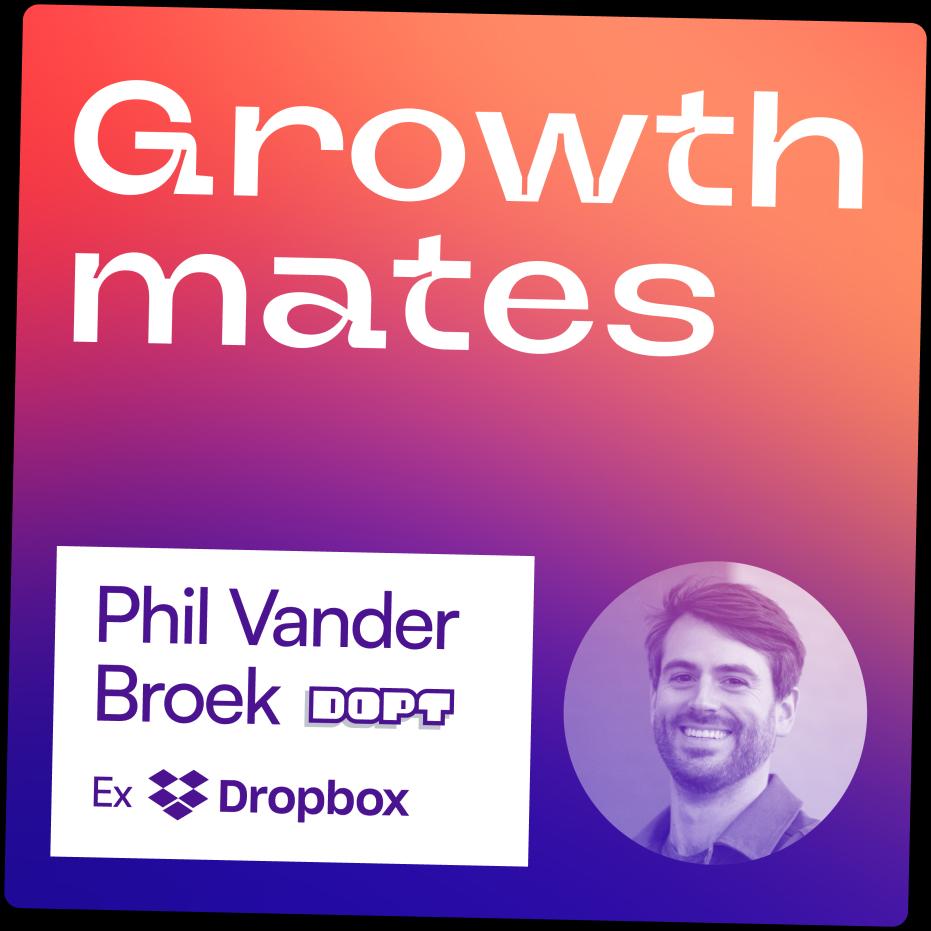
Unpacking product onboarding: an interview with Dopt co-founder, Phil Vander Broek
- February 16, 2024
- 8 min read
User onboarding is critical for SaaS because it shapes users' first impressions and path to value, the biggest contributor to long-term retention and growth. To unpack this topic, our co-founder Phil Vander Broek, recently had a conversation with Kate Syuma (Growth Advisor, ex-Miro) on the Growthmates podcast.

In this conversation, you can learn more about:
- User Onboarding learnings from Phil’s previous experience as Head of Growth Design at Dropbox
- Onboarding industry trends and best practices, highlighting research insights from 80+ companies
- The story behind the founding of Dopt
You can read the full interview below or listen to the episode on Apple | Spotify | YouTube.
Approach to user onboarding at Dropbox
Kate:
Let’s start from your past — in your experience at Dropbox as a Head of Growth Design, how did you approach user onboarding throughout your tenure? Could you share insights into your strategies and methodologies for enhancing the user onboarding experience?
Phil:
User onboarding was a continuous journey at Dropbox, remaining a top priority throughout my tenure. A key strategy was dividing users into two main groups: personal and business users. Personal users typically sought consumer-oriented use cases, such as mobile backup or family collaboration, whereas business users focused more on team-based experiences requiring administrative functionalities. This segmentation helped tailor our onboarding efforts to address the distinct needs of each user segment.
Kate:
During your time at Dropbox, you dealt with both B2C and B2B onboarding. Were there any unexpected behavioral insights or challenges you discovered during experimentation? For example, did you find users struggling with certain tasks like inputting personal data, contrary to your initial expectations?
Phil:
I appreciate that question because it prioritizes understanding user behavior over focusing solely on experimental outcomes. During my time at Dropbox, we analyzed the end-to-end user journey of the business onboarding. One of the key insights was users' lack of confidence in managing access to their content. This posed a significant barrier to users getting value from Dropbox and posed challenges in long-term user retention.
As a growth team, our primary objective was to facilitate user discovery and connection with value.
Our research revealed several underlying issues, including defining, seeing, and managing access permissions. Users expressed concerns about inadvertently granting access to sensitive information and found the overall content structure confusing. These insights underscored the importance of addressing core product challenges to streamline the onboarding experience.
As a growth team, our primary objective was to facilitate user discovery and connection with value. While improving the permission model wasn't directly within our ownership, we recognized the opportunity to improve the onboarding process by simplifying users' interaction with permissions during onboarding. This led us to design an experiment focused on simplifying permissions during the first upload, aimed at providing users with clear options for sharing content.
Our experiment highlighted the potential for further improvements in the permission model. It sparked discussions on exploring a vision for a simplified system for managing access within Dropbox, demonstrating how growth-driven insights can drive transformative changes in product development.
Instead of presenting users with complex folder hierarchies and permission settings, we introduced a streamlined approach that offered users a choice between sharing content with everyone or specific individuals. This entry point into managing access was highly successful, leading to increased user engagement and satisfaction.
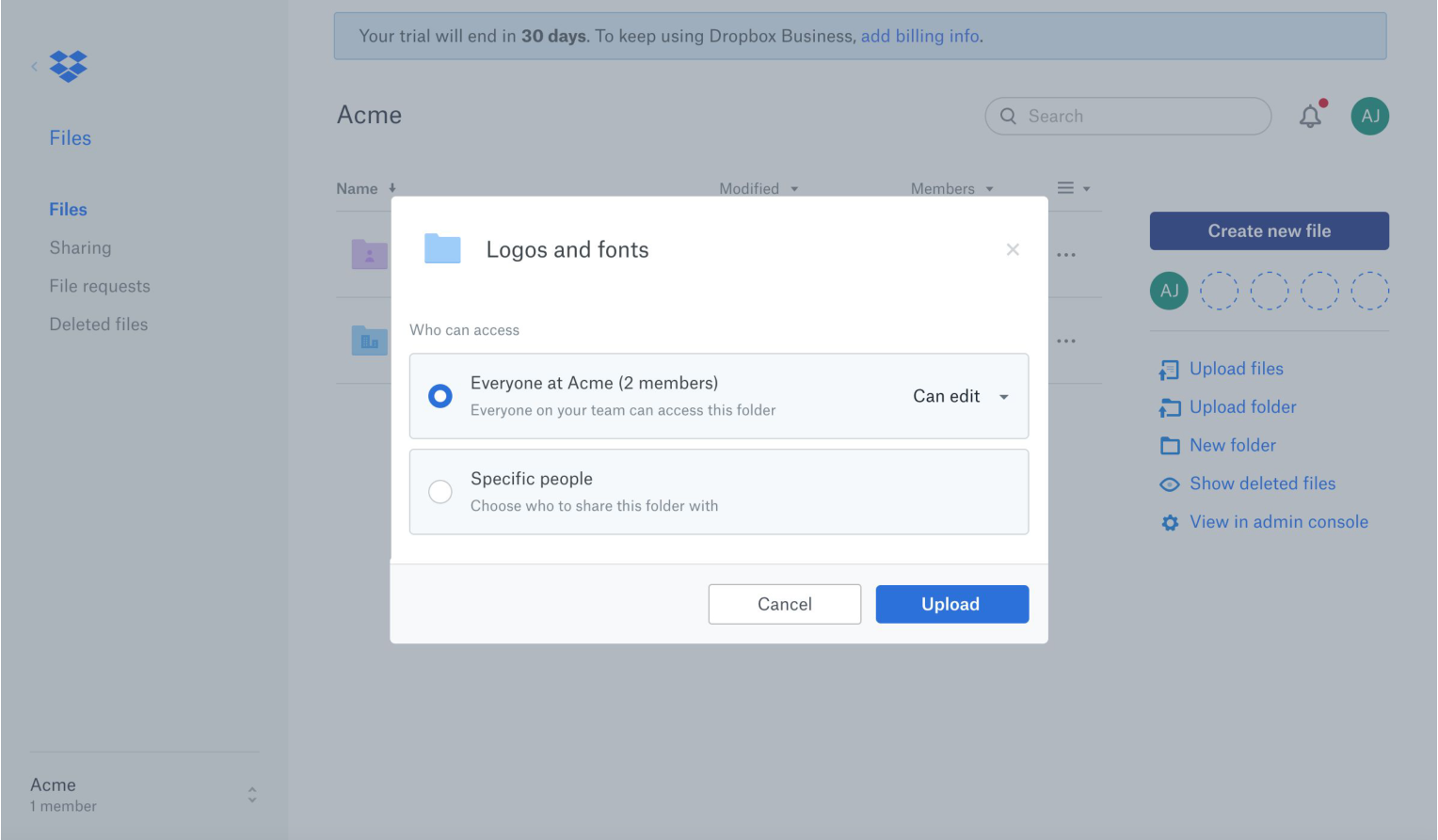
Moreover, our experiment highlighted the potential for further improvements in the permission model. It sparked discussions on exploring a vision for a simplified system for managing access within Dropbox, demonstrating how growth-driven insights can drive transformative changes in product development.
Kate:
It sounds like the Core and Growth teams collaborated a lot to address this problem. Could you share some insights into how you navigated this collaboration at Dropbox and how you ensured alignment, particularly when addressing complex issues like access management?
Phil:
There are a lot of challenges surrounding good communication, ownership, and collaboration. For this issue, I would say it was like working together, yet separately. By that, I mean, since this experience was somewhat separate from the onboarding flow, we could run experiments on our own. When we ran the experiments and had learnings, we shared them with the core team. The core team had already been working on some key model improvements as part of a long-term initiative. In that sense, the collaboration worked pretty seamlessly because we were able to say, "You’re on the right path, consider these possible directions."
Kate:
In your experience, did you have any formal rituals or practices that facilitated a connection between the core team and the growth team? It would be valuable advice for teams in the early stages of developing a product-led growth team and striving to establish alignment and culture.
Phil:
The most important practice involves creating end-to-end user journeys. It's essential to remain focused on the user's key tasks or jobs to be done, ensuring everyone shares a common understanding of these tasks. By mapping out every screen users encounter while performing these tasks, we gain valuable insights into the user experience. This deeper level of understanding allows us to identify areas for improvement and align our efforts.
It's essential to remain focused on the user's key tasks or jobs to be done, ensuring everyone shares a common understanding of these tasks.
For instance, when analyzing the onboarding flow, we discovered there was something like 36 steps! This approach revealed inefficiencies and areas of opportunity, sparking valuable discussions on how to increase user activation. By overlaying problem statements, research findings, and quantitative data onto these user journeys, we were able to pinpoint specific areas for improvement and prioritize our efforts effectively.
A great case study from my experience: collaborating with marketing and product teams to analyze website user journeys. By collectively looking at the flows with quantitative data and customer feedback, we identified opportunities to refine messaging, significantly change the IA, create better imagery, and optimize conversion. This collaborative approach ensured alignment across teams and empowered each team to focus on their respective areas of expertise while contributing to a unified vision for the product.
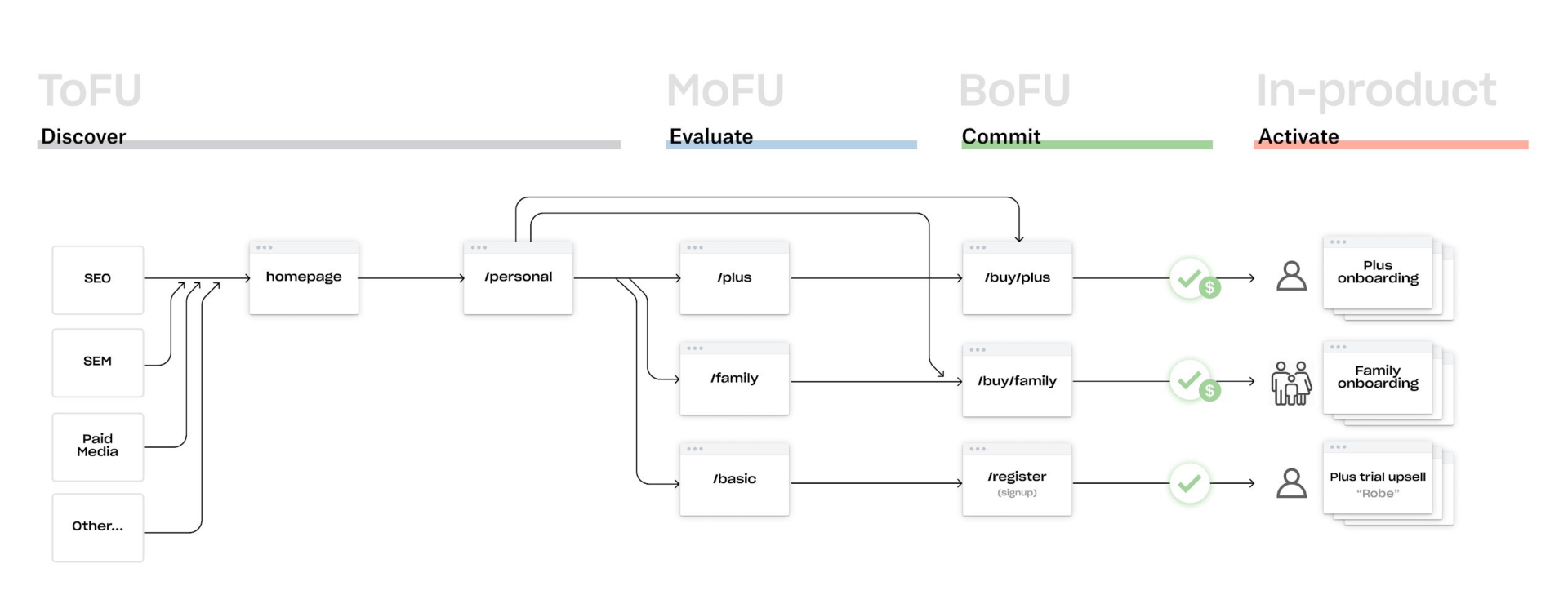
Kate:
How did you ensure that these user journeys translated into actionable insights rather than remaining static artifacts? In my experience and conversations with others, I've seen instances where such visualizations are created but then left untouched, becoming mere decorations on a board.
Phil:
Ideally, integrating user journeys into our workflow would have been a consistent practice, perhaps every quarter. This regular cadence would ensure that we stay aligned with the evolving product and user needs. Rather than reacting to specific projects, it should have been a strategic input informing broader plans spanning quarters or even years.
At Dropbox, our approach was somewhat mixed. While we occasionally aligned user journeys with specific projects, we excelled when undertaking major overhauls, such as website revamps. During these significant resets or organizational changes, user journey mapping became a super important tool for realigning teams and bringing clarity.
User onboarding industry trends
Kate:
We've covered a lot of ground regarding your experiences at Dropbox, and I'm eager to delve deeper into the broader landscape of user onboarding within the industry. Given your extensive work in creating Dopt as an onboarding solution, it would be valuable to explore some recent trends you've observed. Shifting our focus to the B2B segment, what do you identify as the primary challenges or trends currently shaping this space in terms of onboarding?
Phil:
After my time at Dropbox, I founded a company called Dopt, a developer-first product adoption platform that helps teams build better product onboarding and education.
One notable trend is that teams struggle to define effective onboarding strategies. They often don’t know what good looks like or where to start.
Through working with Dopt customers and industry leaders like Lauren from Notion, Gaurav from Superhuman, and Jamie from Loom, I've learned a lot about current trends.
One notable trend is that teams struggle to define effective onboarding strategies. They often don’t know what good looks like or where to start. This challenge stems from the uniqueness of each product and its user base. Activation metrics, crucial for B2B SaaS success, are very different for each company due to this diversity.
I really advocate for a return to the first principles: understanding users, their tasks, and their intent.
The second trend is that many discussions about onboarding focus on modalities rather than first principles, which can lead to misguided approaches. For instance, one client's failed checklist implementation highlighted the importance of understanding user behavior and needs before choosing a modality. I advocate for a return to the first principles: understanding users, their tasks, and their intent. Once a team figures those out, they can come up with good modality hypotheses. A checklist that doesn’t work for one company might be amazing for another.
Additionally, fostering a growth mindset centered on learning and iteration is key. This approach allows teams to adapt strategies based on insights gained from failed attempts, ultimately leading to more effective onboarding practices. The product onboarding playbook I created digs into these principles and offers practical guidance on selecting and implementing modalities tailored to specific products, emphasizing the importance of thoughtful consideration rather than adopting one-size-fits-all solutions.
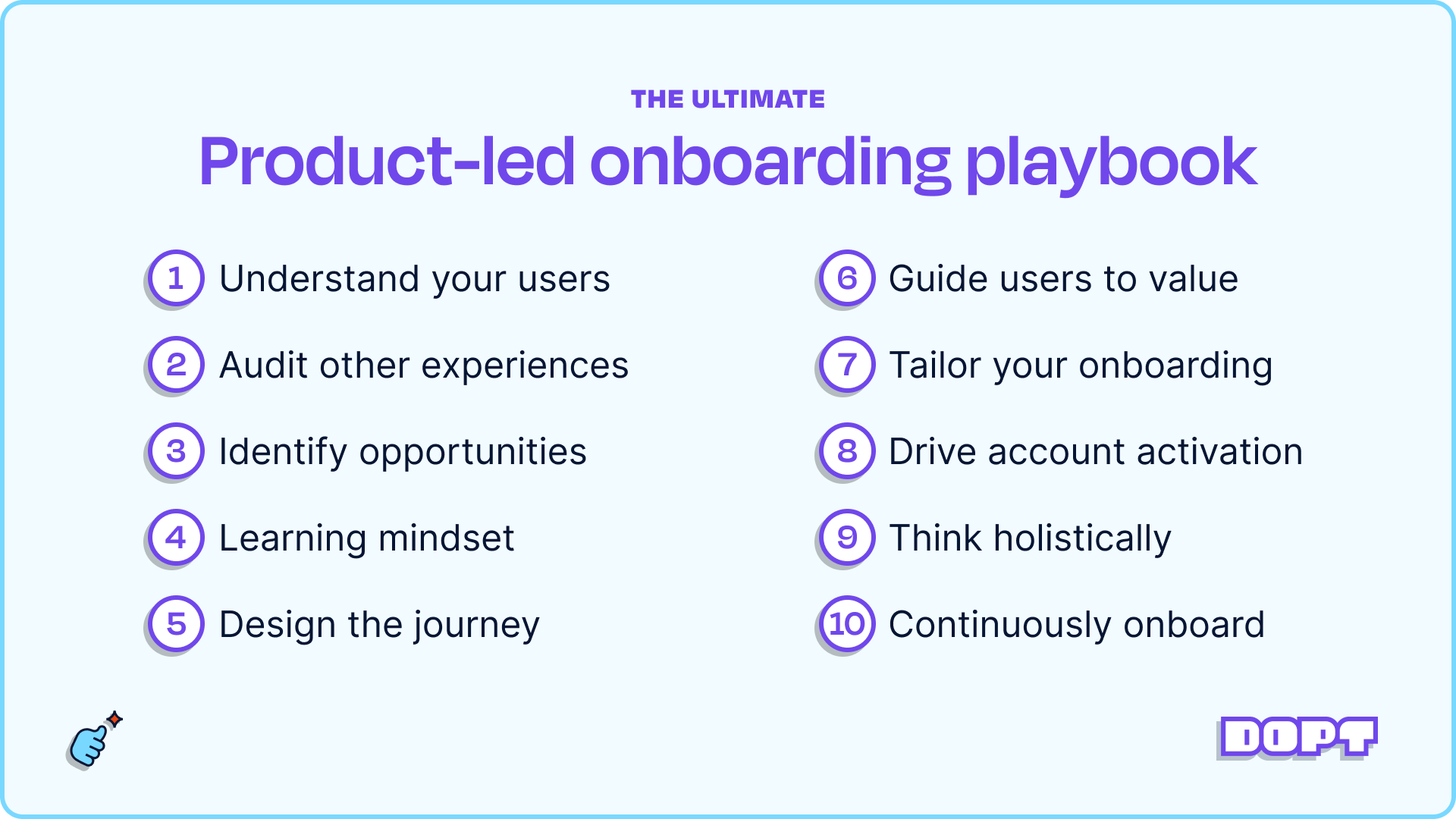
Kate:
I appreciate the idea of returning to user-centered foundations. Sometimes products are too quick to abandon strategies that don't immediately yield results. For example, if checklists don't work, teams might hastily switch to tooltips without considering how they could improve the checklist's content, personalization, or timing. It's important not to discard useful tools prematurely.
In my industry research, which involved conversations with over 80 companies across B2B and B2C sectors, I observed common challenges.
- Defining activation, for instance, is notoriously tricky and often requires significant time and effort. Investing in refining this metric can greatly benefit the onboarding process.
- Regarding UX patterns, we found that there's no one-size-fits-all solution. It's more effective to leverage a variety of learning styles tailored to different user journeys and mental models. Additionally, for complex B2B products with long time-to-value, measuring success based solely on first-session or first-week retention metrics can be misleading.
- Team activation and onboarding present another layer of complexity, as highlighted by your experience at Dropbox. Distinguishing between personal and team onboarding metrics is crucial for accurately assessing success in such contexts.
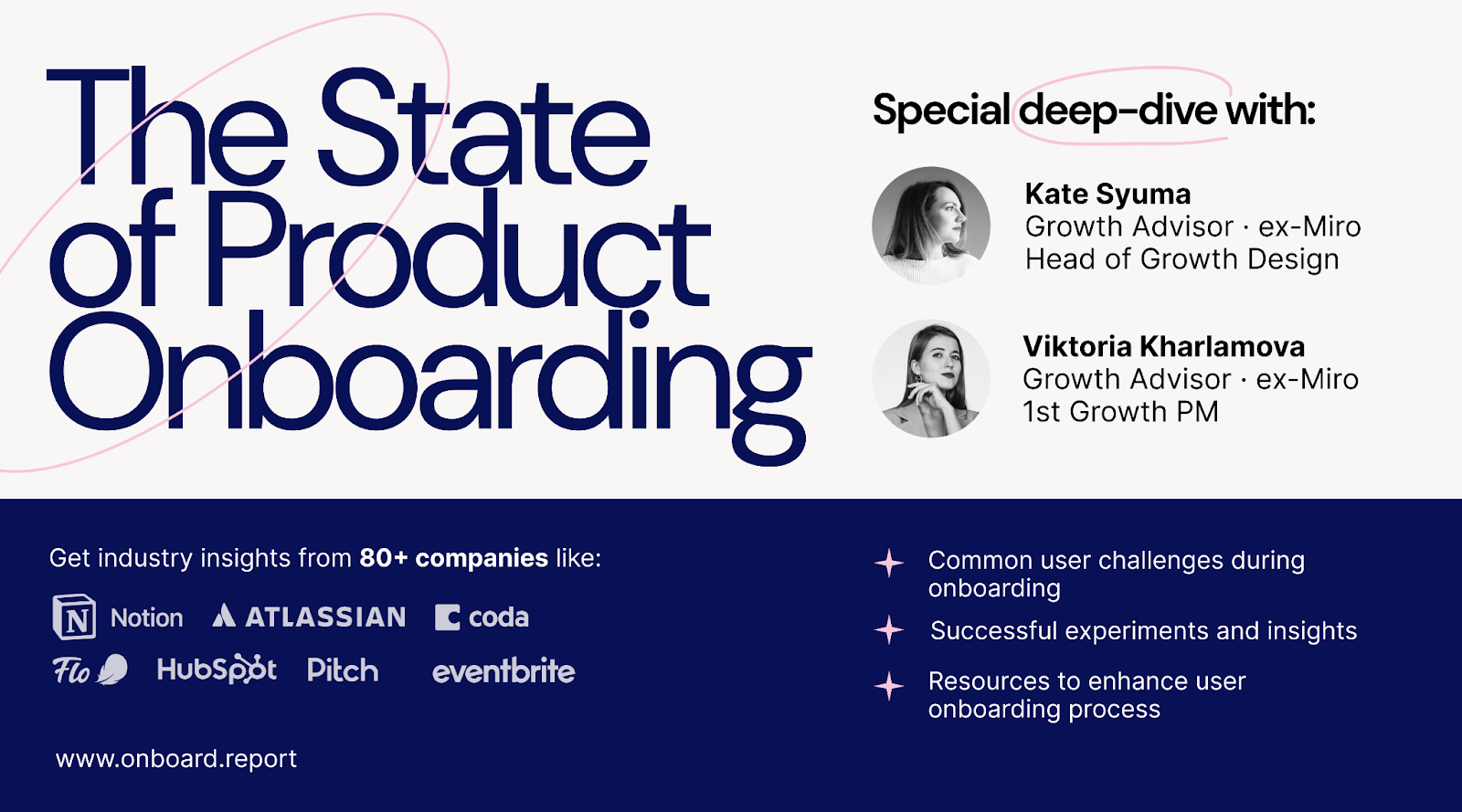
I'm excited to share our research study, "onboard.report," which aims to distill our insights into a user-friendly format accessible to industry professionals. It's designed to be easily shared and navigated, providing valuable insights for improving onboarding practices across the board.
Phil:
I think those are key insights that I completely agree with. I've encountered some of those challenges firsthand, such as defining activation at Dropbox. Additionally, when I was working with the product onboarding playbook, I was particularly intrigued by their approaches to identifying the "aha" moment and defining activation. Gaurav, in particular, offered some valuable insights about keeping things simple initially and prioritizing retention, especially in early-stage scenarios where activation might lack sufficient volume or understanding of user behaviors.
His framework emphasizes starting with a solid hypothesis, making progress without overcomplicating things, and gradually delving deeper into whether activation correlates with retention, which is often the ultimate goal. So, to your point, tackling challenges like team activation can also benefit from starting simple and embarking on a learning journey in each of these domains.
The story of founding Dopt
Kate:
As we've primarily discussed user onboarding throughout this interview, I'd now like to delve into your intriguing transition, which is quite inspirational. How did you muster the courage to start your own venture after being in what might have been a comfortable full-time job? I'd love to hear more about this transition and also learn about Dopt, and how you came to create the product and fully dedicate yourself to this new journey as a co-founder.
Phil:
Essentially, my journey from Dropbox to founding Dopt was a blend of experience and opportunity. At Dropbox, I encountered many parallels between being a growth practitioner and an entrepreneur, which laid the groundwork for my transition. My interest in business and product, coupled with my design background, fueled my curiosity for growth. After leaving Dropbox, I teamed up with friends to start a collaboration app. We soon realized the opportunity could have been more promising than we initially thought. This setback prompted us to reassess our approach.
At Dropbox, I encountered many parallels between being a growth practitioner and an entrepreneur
We embarked on a discovery phase, seeking to identify a valuable problem to solve. Conversations with industry experts and entrepreneurs led us to focus on product-led growth. Leveraging my network, I reached out to tons of professionals, engaging in extensive research to pinpoint burning problems. This process revealed a common challenge: onboarding and activation. Many existing no-code tools on the market solve this problem, but they have very low user satisfaction, particularly for builders like PMs, designers, and developers.
Driven by these insights, we hypothesized alternative solutions, with a focus on developers as our ideal customer profile. Over several months, we iterated on prototypes, solicited feedback, and gauged interest from potential customers. This iterative process, blending discovery with development, was instrumental in shaping our vision for Dopt.
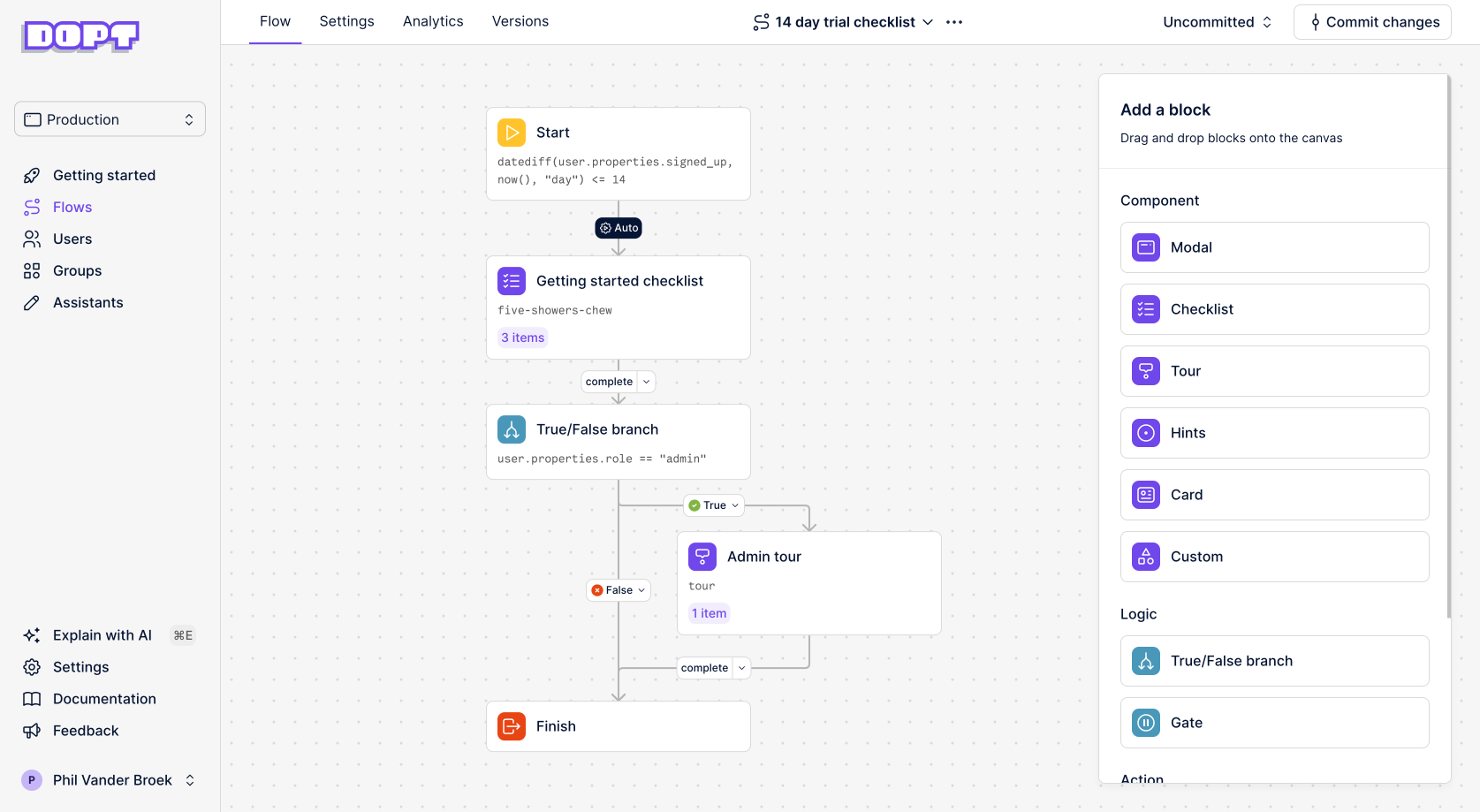
Adopting a framework from Mike Maples, Partner at Floodgate, we aimed to offer a solution so distinct that it rendered existing alternatives irrelevant. This approach resonated with prospective customers, who sought a streamlined, customizable onboarding solution tailored to their needs. Despite initial hesitations about working with a startup, the urgency of the problem and the uniqueness of our solution compelled our customers to take the risk.
Our journey from ideation to execution with Dopt was guided by a relentless pursuit of solving a critical problem in a novel way, backed by thorough research, and iterative prototyping.
Kate:
It underscores the overlap between design and entrepreneurship. Could you elaborate on how your design background has influenced your approach as a founder, particularly in terms of integrating various aspects of the business and applying tactics across different parts of the growth funnel?
Phil:
Transitioning from design to entrepreneurship has been a continuous learning journey for me.
What I find fascinating about growth and entrepreneurship is that it's not just about understanding your product; it's also about grasping your users, the market dynamics, and the fundamentals of your business
In both roles, the key is to absorb knowledge like a sponge and maintain a high velocity of learning to ensure you're heading in the right direction. What I find fascinating about growth and entrepreneurship is that it's not just about understanding your product; it's also about grasping your users, the market dynamics, and the fundamentals of your business, such as finding the right pricing model.
As a designer, I've always been customer-centered, focusing on end-to-end user journeys and product-centric thinking. Bringing these attributes into entrepreneurship has been incredibly rewarding and enjoyable for me.
Listen to the full conversation with Phil on Growthmates podcast:
You can subscribe to the Growthmates newsletter here for more interviews.
